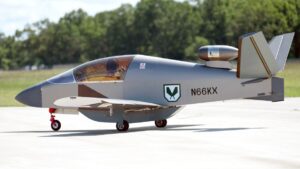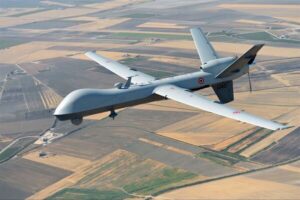Registering your drone in the U.S. is essential not only to comply with Federal Aviation Administration regulations but also to avoid scams and hefty penalties.
Here’s how to register your drone properly and what you need to know to avoid legal troubles.
The who, where, and what of drone registration
So, who needs to register their drone? If your drone weighs more than 0.55 pounds (that’s 250 grams or more), you’re required by law to register it with the FAA, whether you’re flying recreationally or commercially under Part 107. Drones under 250 grams used for recreational purposes are exempt from registration. This is why drones under 250 grams are such a big deal.
Where do you go for drone registration? The only official site where you can register your drone is the FAA’s DroneZone. This site allows you to input your details and pay the $5 registration fee, ensuring you meet FAA regulations and avoid any penalties.
And what do you need for registration? Before starting the registration process, gather the following:
- Physical and mailing addresses
- Email address and phone number
- Make and model your drone
- Remote ID serial number (if applicable)
- Credit or debit card for the $5 fee
Steps to register
- Visit the FAA DroneZone website and create an account if you don’t already have one.
- Choose your registration type: Select either Part 107 for commercial use or the Exception for Limited Recreational Operations.
- Enter your information: Provide your personal information, drone specifics, and the Remote ID serial number if required.
- Pay the fee: The $5 fee covers all drones you own under the Exception for Limited Recreational Operations.
- Receive your registration number: You’ll get a registration number and certificate after payment. Keep a copy with you when flying.
Avoiding drone registration scams
Many scam websites mimic the FAA’s official site, charging up to $200 for drone registration—a process that should cost just $5. These sites often provide a legitimate registration number but at a steep markup, and they may misuse your data.
For example, after a quick Google search of “register your drone,” the first non-FAA site was droneregistration.com which charges $40 for drone registration.
Here’s how to spot a scam:
- High fees: If a site charges more than $5, it’s not legitimate.
- Multiple drone charges: The FAA’s $5 fee covers all your drones, so avoid sites that charge per drone.
- False affiliations: Be cautious of sites claiming to simplify the process of being “approved” by the FAA.
The FAA advises registering only through their official DroneZone site to ensure you’re not overcharged or scammed.
Consequences of not registering your drone
Failing to register your drone can result in civil fines of up to $27,500 and criminal penalties of up to $250,000 or three years in prison. While it’s unlikely that the FAA is actively searching for unregistered drones to prosecute, if you accidentally fly in a no-fly zone or commit another violation and your drone isn’t registered, you could certainly face a hefty fine. Considering registration only costs $5, it’s not worth the risk.
The FAA considers various factors when determining fines, such as the nature of the violation, which could be anything from a minor oversight to a more intentional action. Penalties might be higher if you fly over crowds or use larger drones. The fine structure also depends on your operator category, whether you’re a commercial pilot, flight instructor, or just flying for fun. Certain violations, like interfering with wildfire efforts, could result in fines between $15,000 and $20,923 while failing to register your drone could lead to more significant penalties.
After registering your drone
Once your drone is registered, keep your certificate with you during flights. Make sure your drone is labeled with your registration number, and be ready to show your certificate to law enforcement if asked. When your registration expires (registration is valid for three years), renew it through the FAA DroneZone portal to remain compliant.
And if you are looking to re-register but can’t find your old registration number, don’t worry. Looking up your number on the FAA DroneZone site is very simple.
The post How to register your drone in the U.S. (and avoid being scammed) appeared first on The Drone Girl.
 With weather, limited flights and long distances, gravel runways at remote airports — particularly in Northern Canada — are difficult to get to, let alone to inspect for safety. So Northeastern University researcher Michal Aibin and his team have developed a more thorough, safer and faster way to inspect such runways using drones, computer vision and artificial […]
With weather, limited flights and long distances, gravel runways at remote airports — particularly in Northern Canada — are difficult to get to, let alone to inspect for safety. So Northeastern University researcher Michal Aibin and his team have developed a more thorough, safer and faster way to inspect such runways using drones, computer vision and artificial […] With weather, limited flights and long distances, gravel runways at remote airports — particularly in Northern Canada — are difficult to get to, let alone to inspect for safety. So Northeastern University researcher Michal Aibin and his team have developed a more thorough, safer and faster way to inspect such runways using drones, computer vision and artificial […]
With weather, limited flights and long distances, gravel runways at remote airports — particularly in Northern Canada — are difficult to get to, let alone to inspect for safety. So Northeastern University researcher Michal Aibin and his team have developed a more thorough, safer and faster way to inspect such runways using drones, computer vision and artificial […]





